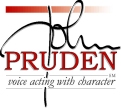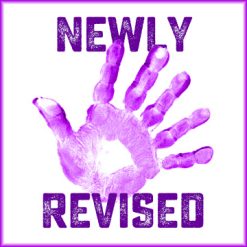|
Audiobooks: How To Keep Track
Of All Your Character Voices!
By John Pruden
Voice Actor
 The first step in narrating any audiobook is to read the book and take copious notes. The first step in narrating any audiobook is to read the book and take copious notes. Exactly what notes you should take will be covered in a future VoiceOverXtra article, but suffice it to say that you will create a list of characters who have speaking parts.
As the story-teller, your job is to create a different character voice for each speaking role, so that the listener can tell them all apart just by hearing them.
This is called "character separation” and can be one of the biggest challenges in narrating fiction audiobooks.
So it surprises me that the most common question I’ve been asked about narrating such books is not, "How do you come up with so many different voices?” but "How do you keep track of all the voices?”
Indeed, it's a challenge. But here are methods to help ...
NEED QUICK RECALL
Recording audiobooks is all about efficiency.
If you are one of the many narrators who are unable to have instant recall as to which voice you used for each character, you will need another way to do that as quickly as possible.
One option is to use technology you probably already possess.
USE MP3 PLAYER
Record a sample of each voice you think you will frequently refer to throughout the book, and save it as an mp3 file.
Name each file using the character’s name.
Import those sample mp3 files into your mp3 player software of preference (such as iTunes) and create a playlist containing all the character voice samples.
Sync that playlist to your mp3 player (such as an iPod). This way, you can have your mp3 player in the booth with you and listen to it using your earbuds as each character appears in the book.
KEEPS YOUR PLACE
It’s a little labor intensive to do it this way, but the nice thing is that you can simply stop recording, listen to the character voice sample, and then start recording again. You won’t lose your place while recording (more on this later).
Also, using each character’s sample as a reference, or baseline, will bring you right back to where your voice needs to be for that character.
If you have a small digital recorder, depending on its features, you may be able to use it in the same way by placing those recordings in their own folder and naming each track.
STARTED WITH 76
I learned this method from Pat Fraley and Hillary Huber’s audiobook training manual, Billion $ Read, and used it on my first audiobook, which contained 76 characters.
Since not every character was a recurring role throughout the book, I only had to make samples for about 15 of the main characters.
This is true for every book.
CREATE SEPARATE TRACKS
Another way - and which takes less preparation - is to record those character samples, and place those recordings on a separate track within the recording software you are using.
There are two ways to do this:
NAME THE CHARACTERS
Depending on your recording software, you can name each character’s sample recording using the character’s name as in the previous method. With the Pro Tools software, you simply double-click each "region” to rename it.
The advantage of doing all of this within your recording software means you won’t have to convert any samples to mp3 and then sync them to your iPod.
And, with this method, you can scroll back to where a particular character’s sample is located, listen to it, and then return to where you left off.
GET LOST?
This can become a problem, though, especially with a longer book, because you will spend more and more time scrolling back and forth to access those samples on the other track as the book progresses.
It’s easy to get lost and waste time. But there is a way to prevent that ...
USE MARKERS
Many recording software programs use markers – kind of like putting a pin into a map to guide you back to a specific location.
In this method, you simply wait until you speak a character’s first line and drop a marker there.
You then drop additional markers as each new character appears, labeling each marker with it’s corresponding character’s name.
You will build up a list of markers, one for each character.
MARK YOUR SPOT
This way, when a character doesn’t speak for a few pages, a few chapters, or until the second half or end of the book, you can refer back to that character’s voice sample by simply clicking on the marker you dropped, and you will instantly be taken to that point.
Before clicking on any character’s marker to hear the sample recording, it’s a really good idea to drop a temporary marker right where you are - a place marker - so you can quickly find your way back after listening to the sample recording, then delete the temporary marker after you return to it, and continue recording where you left off.
Dropping markers is particularly easy in Pro Tools. You simply hit the "Enter” key on the keypad, type in the character’s name, and hit "Enter” again to save it.
This method is the simplest and quickest, and therefore the most efficient.
CAN SKIP SOME
Again, you won’t have to do this with every character. Since some characters only have a line or two, or appear only in one chapter, there is no need to keep track of those voices since they won’t appear again.
Of course, you know that because you read the entire book before recording it. Right? Right!
THEY'RE QUICK REMINDERS
Regardless of which method you use, in every instance you will probably need no more than about five seconds of a character’s voice sample to remind you of the voice.
You may find it helpful to keep repeating the words you hear in your sample as you make your way back where you left off, to keep it fresh in your mind … or mouth, as the case may be.
Keeping track of your character voices is critical to keep the recording process moving forward, which helps to keep your recording ratio down.
Recording ratio? You guessed it – that will be covered in a future article!
ABOUT JOHN ...
John Pruden is a full-time audiobook narrator who also performs in corporate narrations, as animation and video game characters, and in radio and TV commercials through his company, Voice Acting With Character. In just under three years, he went from being a part-time voice actor with a day job to becoming a full-time, home-based audiobook narrator. He will be writing more VoiceOverXtra articles chronicling how he got where he is today, and what he has learned along the way.
Web: www.johnpruden.com
Email: info@johnpruden.com  Your Daily Resource For Voice-Over Success
|
As of the NEW website launch, 03/22/2012





.png)



As a child actor in Hollywood (MGM), our teachers taught us techniques to recall our voice characters. This is before recording on computer, of course. We had to recall them from memory. We also were drilled in alternating character with narrator. This was particularly difficult. I recall being very frustrated in these exercises as a child.
Hope everyone will tune into my Webinars. Part 1 is Jan 18 and Part 2 is March I (http://bit.ly/Audiobook-Webinars)
Again, John, thanks for the article. Although I agree it is good to have the voices recorded as reference, an actor still should develop character memory. It's a great skill to have.
Pearl